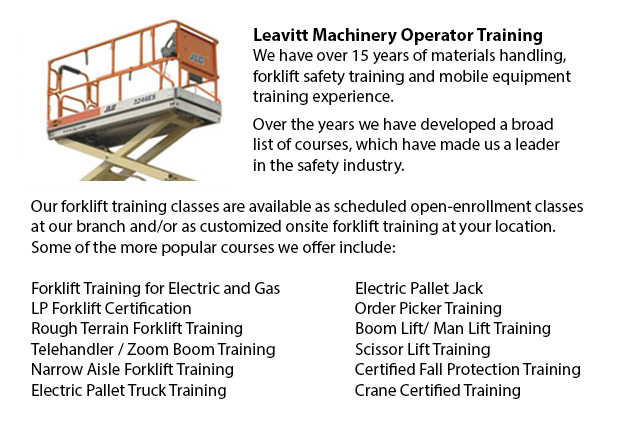
Oshawa Scissor Lift License - The is an inherent chance in operating a scissor lift, as with all types and kinds of powered work tools would require correct handling in order to avoid accidents which might lead to injuries or damage. Companies need to make sure that employees using this particular machine have the needed qualifications.
Businesses must not allow scissor lifts to be used by untrained people. The scissor lift is used to lift people to high levels. Failure to understand and fully abide by safety standard could result in damage to the lift or injuries for users.
There are no regulations governing the use of fall protection for scissor-lift users. Nonetheless, manufacturers may suggest the use of fall protection and in several circumstances tying off in scissor lifts may be required by employer guidelines, job-specific risk assessments or local regulations.
To ensure that the scissor lift is in good working condition prior to using the equipment, the operator has to carry out a thorough inspection. This is the operator's task, even if the unit has already been in service that day. The operator's handbook of the machine contains a pre-operation checklist.
Examples of what to look for when doing a pre-operation inspection include checking tire-inflation pressure, and checking controls in the platform and ground controls in order to ensure they are functioning. When retracting or extending the boom, watch for delayed movement on the fly section which can indicate loose cables. When operating the controls, make certain that the emergency stop switches are working. Operate functions against the machine's cutout switches. Check the boom control system by cycling a boom lift to the furthest extent of its operating envelope. Safety limiters should stop the unit automatically before it moves into an unstable position, if they are functioning right. If they aren't, turn off the lift and ensure that repairs are made before utilizing it for a second time.
Safe and proper operating procedures must be followed at all times. Levers should be operated with controlled, even pressure. A control lever must never be pushed from one position to the opposite position. The lever must be shifted to neutral, prior to stopping, and after that proceeding in the desired direction. When released, levers and control switches must automatically return to the neutral position. Depress the foot switch prior to operating platform controls.
-
Oshawa Scissor Lift Operator Certification
Oshawa Scissor Lift Operator Certification - North American regulators recommend that worksites need operators of scissor lifts, booms or aerial work platforms to obtain certification training. Scissor lift operator certification is not mandatory, bu... More -
Narrow Aisle Forklift / Order Picker Training / Electric Pallet Jack / Electric Pallet Truck Training in Oshawa
A pallet lift is a model of equipment dedicated in the moving of pallets of many dimensions and weights. They might be utilized as an appendage for platform lifts, cranes and other types of heavy machinery or be applied on their own. Pallet hoists ar... More -
Oshawa Crane Operator Certification
Oshawa Crane Operator Certification - The process to permit people to be able to operate certain kinds of cranes is to take crane operator certification training to get certification. The certification process incorporates classroom learning, hands-o... More -
Oshawa Aerial Platform Training
Oshawa Aerial Platform Training - Aerial platform lifts might be utilized to accomplish a lot of unique tasks executed in hard to reach aerial places. A few of the odd jobs associated with this style of lift include performing routine repair on build... More -
Oshawa Forklift Certification Schools
Oshawa Forklift Certification Schools - Forklift Certification is mandatory within North America. Hence, forklift training programs are important both for companies and for people seeking jobs in industries as forklift operators. Forklift training fo... More -
Oshawa Heavy Equipment Ticket
Oshawa Heavy Equipment Ticket - Depending on the nature of the job at hand, the type of construction equipment that a heavy equipment operator makes use of varies. Each and every type of machine is built to perform specific jobs in the most effective... More -
Oshawa Heavy Equipment Certification
Oshawa Heavy Equipment Certification - Large pieces of machines and heavy-duty vehicles are usually known as heavy equipment. This broad term includes utility vehicles from forestry and agricultural implements to civil engineering vehicles, construct... More -
Oshawa Overhead Crane Safety Training
Oshawa Overhead Crane Safety Training - The overhead crane safety training program is meant to equip the operators with the right skills and knowledge in the areas of: crane safety precautions, accident avoidance, materials handling, and equipment an... More

Forklift Certification Oshawa
TOLL FREE: 1-888-254-6157
Oshawa, Ontario
forkliftcertificationoshawa.com
Email Us
About Us


